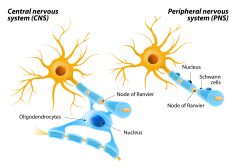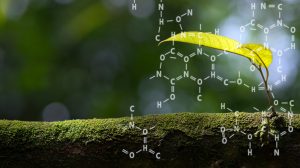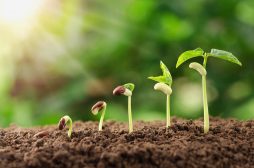Table of Contents
Definition
noun
plural: spontaneous generations
The previously popular notion that living organisms arise or develop from nonliving matter
Details
Overview
Spontaneous generation refers to the previously popular thinking that a living thing could arise or develop from a non-living thing. The theory of spontaneous generation held that complex, living organisms may be produced from nonliving matter. Spontaneous generation may also pertain to the process that supposedly led to the formation or development of a living thing from a non-living thing.
Spontaneous generation vs. Modern abiogenesis
People used to think that mice could form spontaneously from stored grain. Or, maggots could spontaneously appear in meat without the involvement of any biological precursor, like a parent. This principle is sometimes referred to as abiogenesis. Accordingly, a living thing could be created spontaneously from non-living things. However, it should be noted that the modern hypothesis of abiogenesis is different from this obsolete abiogenesis.
The modern hypothesis of abiogenesis postulates that primitive life originated from nonliving matter over a span of millions of years. These life forms were not as elaborate as the life forms that currently exist. Primitive life was likely RNA-based since RNA could serve as both genetic material and catalyst. The emergence of living from non-living entities likely occurred gradually and took millions of years. From these less-elaborate forms, living things eventually diversified and thus became more adapted and sophisticated in terms of more elaborate physical and genetic attributes as millions of years went on.
In spontaneous generation, people used to believe that a living thing as complex as mice and maggots could emerge from nonliving things in a relatively shorter span of time (e.g. minutes, hours, days, or years).
Spontaneous generation vs. Biogenesis
Biogenesis refers to the process wherein life arises from similar life forms. The principle of biogenesis is opposite to that of spontaneous generation. In 1870, Henry Charlton Bastian 1837 – 1915 proposed the term archebiosis to pertain to the living organisms that formed from non-living matter in which he claimed to have witnessed under his microscope. He was also the person who coined the term biogenesis to replace the term spontaneous generation. Later though, Thomas Henry Huxley 1825-1895 proposed that the term abiogenesis be used to pertain to the process of spontaneous generation and the term biogenesis be used for the process where life arises from similar life. Huxley’s proposal became the prevailing definitions of the two terms. Biogenesis, thus, is the opposite of spontaneous generation. It asserts that living things can only be produced by another living thing, and not by a non-living thing.
Equivocal vs. Univocal generation
Equivocal generation, a variant of spontaneous generation and sometimes referred to as heterogenesis or xenogenesis, is supposedly the process wherein a species is produced from unrelated species. For instance, people once believed that a parasitic tapeworm could come from its host. In contrast, univocal generation is the process through which a species comes from parents of the same species.
History
There was a time when people believed that a living thing could arise from inanimate objects. One of the major advocates of the theory of spontaneous generation was Aristotle. He believed that plants and animals reproduce by spontaneous generation apart from sexual and parthenogenetic means. According to his book, History of Animals, while some animals could grow from their parent, others could grow spontaneously.
“So with animals, some spring from parent animals according to their kind, whilst others grow spontaneously and not from kindred stock; and of these instances of spontaneous generation some come from putrefying earth or vegetable matter, as is the case with a number of insects, while others are spontaneously generated in the inside of animals out of the secretions of their several organs.” — Aristotle, History of Animals1
The theory of spontaneous generation was widely accepted before. Francesco Redi 1626–1697 was the first person to refute the theory of spontaneous generation. He demonstrated that maggots did not emerge from rotting meat but from the eggs of flies. He interpreted his findings as omne vivum ex vivo (“All life comes from life”). Botanist Pier Antonio Micheli 1679–1737 had the same observation with his experiment on fungal spores. The fungal spores he placed on melon produced the same type of fungi. It convinced him that the fungi did not arise from spontaneous generation. In spite of this, the theory remained to get wide support until the 1859 experiment by Louis Pasteur.
Louis Pasteur 1822–1895 known for his important works in vaccination, microbial fermentation, and pasteurization, disproved the doctrine of spontaneous generation through his experiment in 1859. He demonstrated that nothing developed from sterilized and sealed flasks. Microorganisms did grow on open, sterilized flasks. He also used swan-neck flasks with fermentable broth. The structure of the flask allowed the air to enter while the dust particles were made to stick to the long curving tube and therefore were prevented from reaching the broth. Despite the air entering the flask, nothing grew on the broth. Conversely, microorganisms grew on the broth when the flask was tilted sideways. This caused the broth to touch the tube wall contaminated with dust. This disproved the notion that microorganisms could spontaneously form from the air. Instead, the microorganisms on the dust caused the spoilage of the broth. These experiments were also crucial in providing direct support for the “Germ theory of disease”.
With the continued advancement of laboratory tools and techniques, spontaneous generation has been kept strongly disproved. At present, the principles of spontaneous generation are no longer favored. The theory is now obsolete.
Supplementary
Variant
- theory of spontaneous generation
Synonyms
Further reading
Compare
See also
Reference
- Aristotle. (1910) c. 343 BCE. “Book V”. History of Animals. Translated by D’Arcy Wentworth Thompson. Oxford: Clarendon Press. ISBN 90-6186-973-0. Retrieved from Link
© Biology Online. Content provided and moderated by Biology Online Editors







